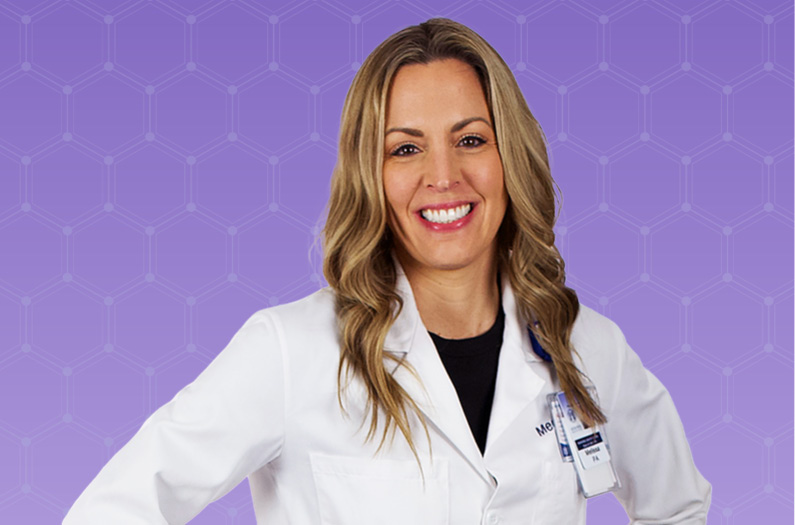Living With Polycystic Ovarian Syndrome
Melissa Hutchinson, PA-C, discusses the complexities of PCOS, including its symptoms, challenges in diagnosis, and effective management strategies.
Insights From an OBGYN Expert
Melissa Hutchinson, PA-C, from our Department of Obstetrics and Gynecology (OBGYN) offers her insight into the most common hormonal disorder among women of reproductive age in the United States, polycystic ovary syndrome (PCOS). Named for the ovaries’ appearance in some, but not all women with the disorder, PCOS affects about 1 in 10 women and is a diagnosis that our providers often encounter in their practice.
With our membership in the Mayo Clinic Care Network, our providers have access to extensive patient resources and the latest research to help further educate our community on relevant and pressing health concerns.
According to the Mayo Clinic, PCOS is most often characterized by infrequent or prolonged menstrual periods, excessive hair growth, acne, or obesity.
While PCOS is not seen as necessarily difficult to diagnose, Melissa does say that she believes that there is definitely a possibility for a delay in diagnosis for some women.
“While there isn’t a cure for PCOS, it can be well managed. Women with PCOS typically have multiple symptoms, so treatment usually requires a multifaceted approach to effectively manage them all. This often includes medication in addition to lifestyle changes. I usually stagger treatment goals to try to avoid overwhelming patients with too many things at once. Different medications and supplements can be used to regulate periods, aid weight loss, encourage ovulation, and help decrease symptoms such as hair growth and acne. Dietary modifications and exercise can also play a huge role.”
Being diligent in managing PCOS symptoms, regardless of their severity, is an incredibly important part of living comfortably with the condition.
According to Melissa, “The most difficult part in managing symptoms is adhering to the lifestyle modifications that are often necessary for best control.” She continues to elaborate, saying, “Oftentimes, women find it much easier to take medications and supplements that may be prescribed, but taking the initiative to make the suggested dietary and exercise changes is often more difficult. Women who are self-disciplined enough to do both often have more complete control of symptoms.”
“Women with PCOS are more likely to develop type II diabetes, high blood pressure, and heart disease,” Melissa says. “PCOS is also often associated with an increased likelihood of obesity, which can lead to an abundance of lifelong complications on its own.”
While this condition affects women hormonally and metabolically, Melissa feels that it’s oftentimes the psychosocial aspect of PCOS that really affects a patient’s quality of life. “While the physical symptoms, such as irregular periods, acne, male pattern hair growth, and weight gain are problematic for many women, it’s the emotional effects and mood disorders, like anxiety and depression, often associated with PCOS that can cause a lot of strain on daily life.”
“You know your body better than anyone else. If you feel something is off, make an appointment and come prepared with a list of your symptoms and any questions or concerns you may have. We will work together to come up with a plan that will work best for you!”
If you are living with PCOS or believe that you may have PCOS, Melissa encourages you to take control of your health.
Symptoms of PCOS
Menstrual Abnormalities
This is the most common symptom of PCOS and includes eight or fewer periods in a year, prolonged periods, frequent spotting, or no menstruation for four months or longer.
Excess Androgen
Often presented as excess facial/body hair, adult or severe adolescent acne, or thinning hair.
Enlarged Ovaries with Numerous Cysts
Having polycystic ovaries alone does not confirm a PCOS diagnosis—a woman must also have one of the other symptoms. Some women with polycystic ovaries do not have PCOS, and some women with PCOS have ovaries that appear normal.
To be officially diagnosed with the condition, a woman must have at least two of the above three symptoms.





